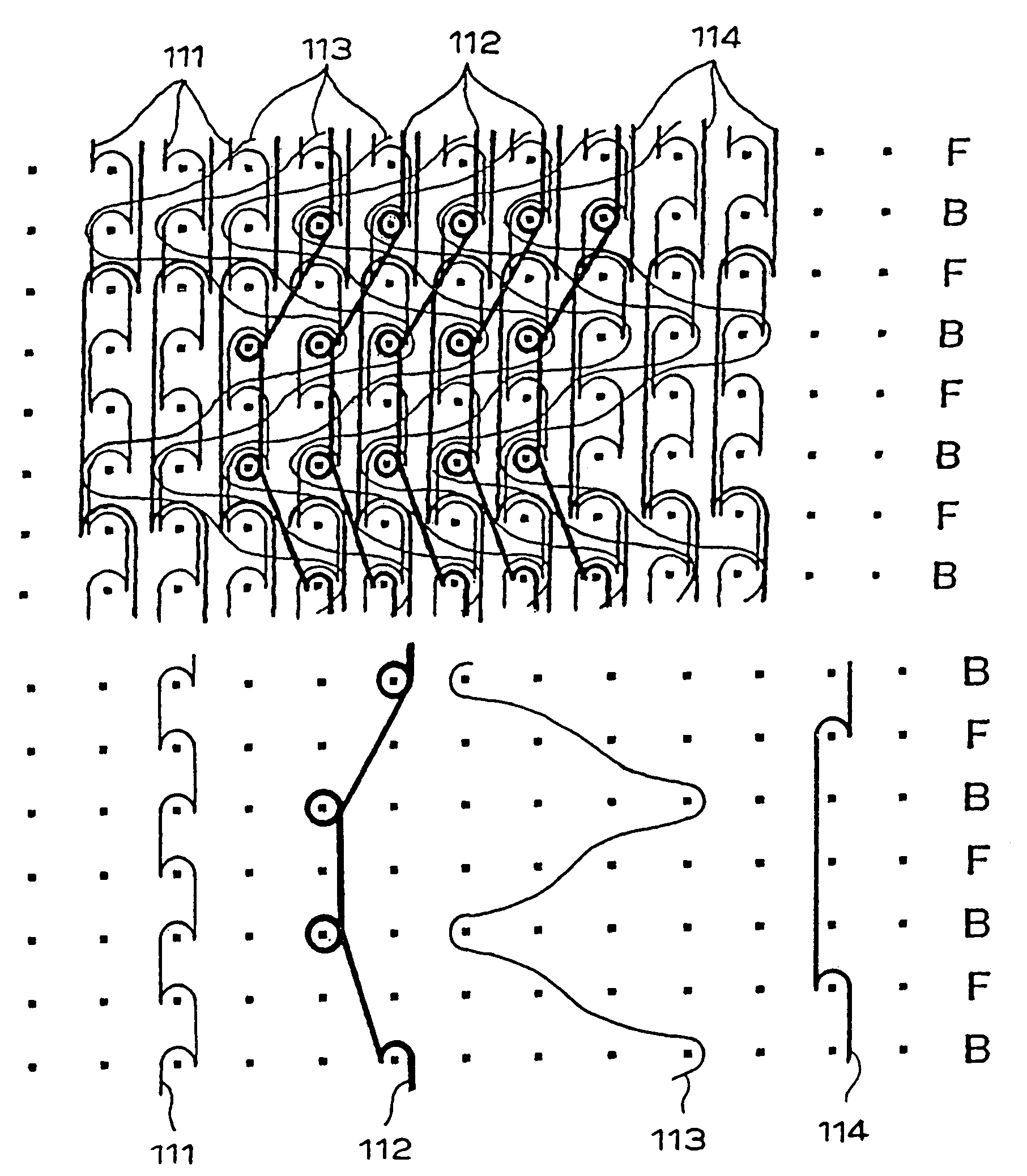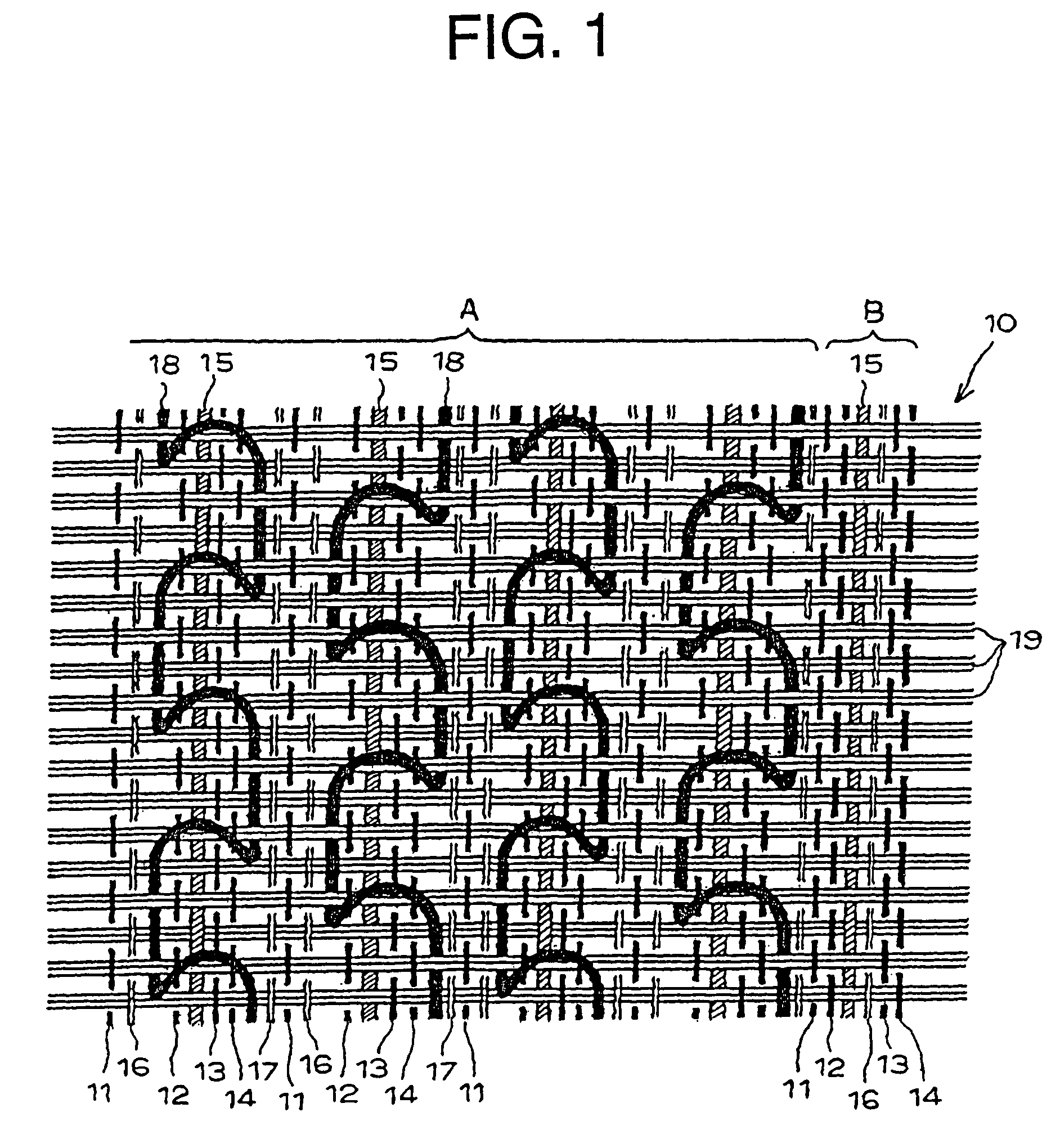Fiber-made surface fastener
a surface fastener and fiber technology, applied in the field of fiber-made surface fasteners, can solve the problems of losing the function of the surface fastener, and achieve the effect of excellent softness and never threatening plasticity
- Summary
- Abstract
- Description
- Claims
- Application Information
AI Technical Summary
Benefits of technology
Problems solved by technology
Method used
Image
Examples
Embodiment Construction
[0027]Hereinafter, the preferred embodiments of the present invention will be described specifically with reference to examples represented in the figures.
[0028]FIGS. 1 and 2 are weaving structure diagrams showing schematically the first embodiment having a woven fabric structure of a woven surface fastener of the present invention. The same example exemplifies a female surface fastener in which piles composed of a multiplicity of multifilament yarns are formed on a single surface of a substrate woven fabric whose ground weave is composed of the woven surface fastener. In the same figures, reference numeral 10 denotes a substrate woven fabric, reference numerals 11 to 14 denote four warp yarns, first to fourth warp yarns constituting the ground weave of the pile formation side surface, reference numeral 15 denotes a finished yarn floating on the ground weave rear surface on an opposite side to the pile formation side which constitutes part of the characteristic portion of the invent...
PUM
 Login to View More
Login to View More Abstract
Description
Claims
Application Information
 Login to View More
Login to View More - R&D
- Intellectual Property
- Life Sciences
- Materials
- Tech Scout
- Unparalleled Data Quality
- Higher Quality Content
- 60% Fewer Hallucinations
Browse by: Latest US Patents, China's latest patents, Technical Efficacy Thesaurus, Application Domain, Technology Topic, Popular Technical Reports.
© 2025 PatSnap. All rights reserved.Legal|Privacy policy|Modern Slavery Act Transparency Statement|Sitemap|About US| Contact US: help@patsnap.com



